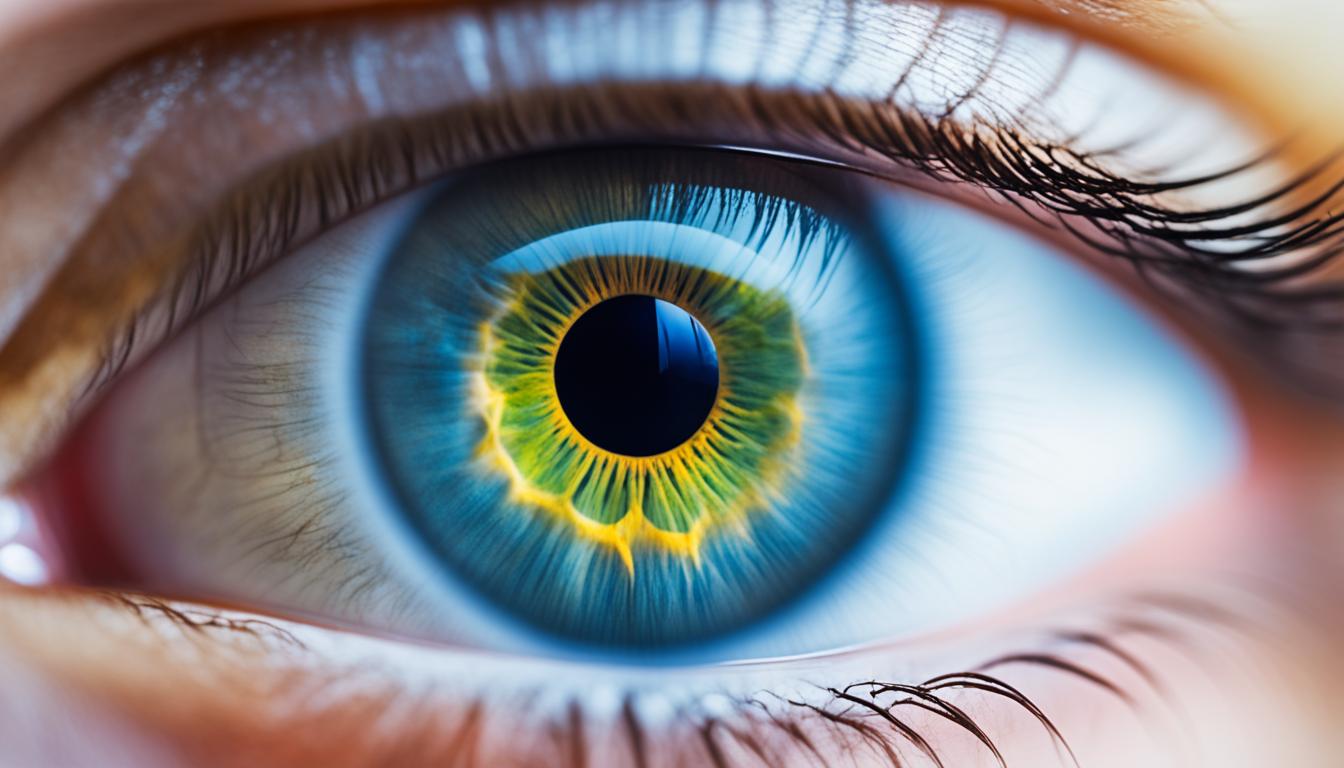Fuchs’ dystrophy affects the cornea, leading to issues like blurry vision. The disease is identified by the slow loss of certain eye cells over time. While the main cause and cure remain unknown, it seems to be passed down and mostly affects women. It gets worse with time and sometimes after cataract surgery.
The signs of Fuchs’ dystrophy show up little by little, often starting with blurred vision. Patients might feel like there’s sand in their eyes, have trouble with bright light, and even have eye pain. A visit to an eye doctor can confirm it based on an eye exam. Unfortunately, there’s no cure yet. But, various eye drops and ointments can help keep the symptoms at bay. In severe cases, when eyesight is severely affected, a corneal transplant might be the last resort.
Experts are always looking for new ways to treat Fuchs’ dystrophy. Stem cell therapy and making artificial corneas are some areas where they show promise. This research aims to find better ways to help those with Fuchs’ dystrophy.
Key Takeaways:
- Fuchs’ dystrophy can make your vision blurry or hazy.
- It tends to run in families and affects women more than men.
- Common symptoms are blurry vision, eye pain, feeling like there’s sand in your eyes, and sensitivity to light.
- To diagnose it, an eye doctor examines your eyes and counts specific eye cells.
- While there’s no cure, some eye drops or ointments can help with the symptoms.
- In severe cases, a corneal transplant might be needed when vision is lost.
- There’s ongoing research into new treatments, like stem cell therapy and artificial corneas, to improve care.
Causes, Diagnosis, and Treatment of Fuchs’ Dystrophy
Fuchs’ dystrophy is a serious eye disease. It greatly affects vision and daily life quality. Knowing its causes, how to diagnose it, and the treatment options are key. This helps in managing the disease, which gets worse over time.
Causes of Fuchs’ Dystrophy
The cause of Fuchs’ dystrophy is not fully known. But, genes seem to be a big part of it. Certain gene changes can make you more likely to get Fuchs’ dystrophy. This can run in families. Also, getting older poses a risk for the disease. It starts showing signs in your 50s. Surprisingly, it happens more in women.
Diagnosing Fuchs’ Dystrophy
Diagnosing it starts with a deep look into the eyes. An eye doctor performs this exam. They check the cornea’s thickness, its surface, and cell count. These steps help figure out if someone has Fuchs’ dystrophy and how severe it is.
This detailed examination helps doctors plan the right treatment.
Treatment Options for Fuchs’ Dystrophy
- Medications: There’s no cure yet for Fuchs’ dystrophy, but medicines can ease the symptoms. Doctors might give eye drops or ointments. These help lower swelling and keep the cornea clear. By preventing too much fluid, they can also make the patient feel better.
- Self-Care Strategies: There are things patients can do to feel less discomfort. For instance, using a hairdryer’s gentle heat helps keep the cornea dry. This reduces vision problems arising from excess moisture.
- Corneal Transplant: When Fuchs’ dystrophy becomes severe and vision loss is big, a transplant might be needed. This surgery swaps bad corneal cells with good ones from a donor. It’s known to increase vision and improve life quality for those with advanced Fuchs’ dystrophy.
Recently, there have been big steps in treating Fuchs’ dystrophy. [[Researchers]] look into using stem cells and creating artificial corneas. These new ways of dealing with the disease could offer better results. They could give hope for a better life to those affected by Fuchs’ dystrophy.
| Treatment Options | Pros | Cons |
|---|---|---|
| Medications | – Non-invasive approach – Can provide symptom relief |
– Does not cure Fuchs’ dystrophy – May have limited effectiveness in advanced stages |
| Self-Care Strategies | – Simple and low-cost methods – Can help manage symptoms |
– Limited impact on disease progression – Not a definitive treatment |
| Corneal Transplant | – Potential for improved vision – Can restore corneal functionality |
– Risks associated with surgery – Need for donor tissue – Long recovery period |
Advancements in Corneal Research for Fuchs’ Dystrophy
Corneal research is making huge strides in battling Fuchs’ dystrophy. This eye disease severely hampers vision. The studies focus on newer methods, like removing the cornea’s inner layer.
This technique looks very promising. It can boost vision without needing a full cornea transplant. This breakthrough means patients might see better without major surgery.
Stem cell therapy is another key area of research. It aims to swap the cornea’s inner cells with stem cells. If successful, we could use cells from one donor to help several people. This method could change the game for treating Fuchs’ dystrophy.
The big dream in this field is making an artificial cornea. Scientists aim to grow corneal cells in labs. Doing so would avoid issues like organ rejection and donor shortages. This innovation offers real hope for Fuchs’ dystrophy patients.
Thanks to these research advances, there’s hope for fighting Fuchs’ dystrophy. These discoveries promise better ways to treat the disease. They could improve vision and life quality for those battling this serious eye condition.

